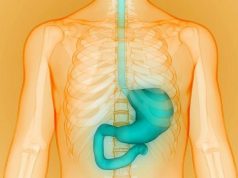The American College of Gastroenterology’s 80th Annual Scientific Meeting
The annual meeting of the American College of Gastroenterology was held from Oct. 16 to 21 in Honolulu and attracted approximately 5,000 participants from around the world, including gastroenterology and digestive specialists and other health care professionals. The conference featured presentations focusing on clinical updates in gastroenterology and hepatology as well as the latest advances in digestive health and gastrointestinal disorders.
In one study, Salman Nusrat M.D., of the University of Oklahoma Health Sciences Center in Oklahoma City, and colleagues demonstrated the increasing burden of morbid obesity in the hospitalized patient.
“There were gender and regional differences, with females and southern states accounting for the majority of admissions. Age trends signify an increasing prevalence in the older population. The aggregate charges for these hospitalizations increased dramatically between 1997 and 2012. The several-fold increase in prevalence of obesity between the 1960s and 1990s might have contributed to these findings. It is possible that these individuals are now older and have been obese for enough time to develop complications of obesity like diabetes and cardiac disease,” Nusrat said. “Further research should focus on verifying the exact cause of the increased cost associated with morbid obesity in the hospitalized patient.”
In another study, Marwan Abou Gergi, M.D., of Catalyst Medical Consulting in Austin, Texas, and colleagues found that obesity is not a negative prognostic factor for in-hospital mortality for patients with upper gastrointestinal hemorrhage. However, the investigators also found that obese patients do have a worse disease severity as measured by increased incidence of hemorrhagic shock and intensive care unit admission rate.
“Obesity is associated with higher health care resource utilization, including longer hospital length of stay and higher total hospitalization charges,” Abou Gergi said. “More frequent in-hospital endoscopies and endoscopic interventions performed on obese patients could potentially explain the similar overall in-hospital mortality rate between obese and non-obese patients.”
“The reasons for the increase in both hospital length of stay and total hospitalization charges should be studied as a first step in trying to reduce them,” Abou Gergi added. “We suspect that increased use of antiplatelet agents and anticoagulation among obese patients might explain the increased disease severity, but further research is needed to clarify this point.”
In an effort to identify clinical predictors of fecal microbiota transplantation (FMT) failure, Monika Fischer, M.D., of Indiana University in Indianapolis, and colleagues created a risk score and a risk stratification model (scores ranging from 0 to 12). The model assigned five points to inpatient status, three points to immunosuppressed state, and one point for each Clostridium difficile infection-related hospitalization. The investigators then calculated the risk score for each patient by adding the points for each risk factor in the model and created low/moderate/high risk categories for FMT failure.
“After applying this model to our dataset we found that patients in the low-risk category have a 13 percent chance of failing, patients with scores of 1 to 3 fail in 17 percent of cases, and patients with scores of ≥4 have a chance of failing at least 44 percent of the time,” Fischer said. “We hope that physicians will find the proposed risk stratification model helpful when planning and discussing FMT with their patients and in terms of being prepared for a repeat FMT among high-risk patients.”
Copyright © 2015 HealthDay. All rights reserved.







